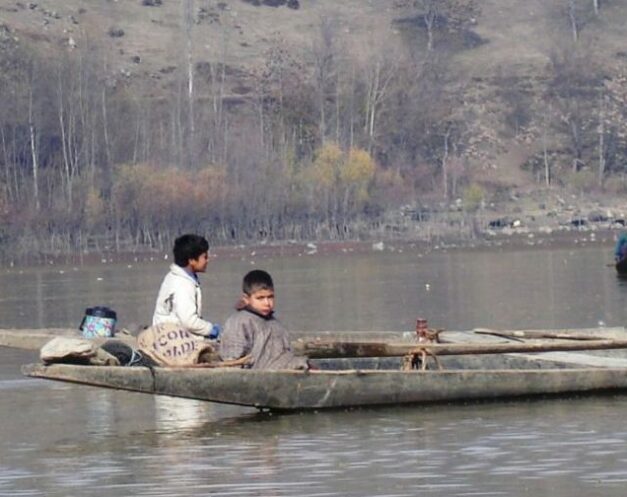Saving the Wular Lake, Kashmir while fighting flood and drought risks downstream

Wular Lake is one of the largest freshwater lakes in Asia. Rapid degradation of Wular Lake has had an enormous impact on community health and livelihoods. We are helping these communities by developing an integrated management plan for restoration of the lake and its catchment.
Wular Lake, is one of the largest freshwater lakes in Asia and is fed by the Jhelum River, itself a major tributary of the Indus basin. The lake plays a significant role in water security in the Kashmir valley by regulating the release of floodwaters from glaciers in the surrounding Himalayas. The lake with its associated wetlands is an important habitat for migratory waterbirds within the Central Asian Flyway and supports rich biodiversity. It is a major fishery resource in the valley, supporting a large population living along its fringes. The wetland also generates revenue for the state government through fisheries and the sale of water chestnut, fodder, and other economically important species. The catchment of the lake supports coniferous forests and alpine pastures, adding to the natural beauty and biodiversity of the wetland area. Recognizing the importance of the wetland for its biodiversity and socio-economic values, Wular Lake was designated as a Wetland of International Importance under the Ramsar Convention in 1990.
Challenges
For decades the important role of Wular Lake in supporting biodiversity and livelihoods had gone unnoticed. Widespread reclamation and drainage of the lake and its marshes for agriculture, settlements and plantations took place. This has contributed to shrinkage of the lake area and degradation of the natural resources it provides to wetland dependent communities. During 1911-2008, the overall water spread and marsh areas shrunk by over half, reducing one fifth of the area’s water storage capacity. Floods and droughts have increased as the water regulation capacity of the wetland has been diminished both due to shrinkage in area as well as loss in water-holding capacity. This has increased the risk of floods and drought for both local and downstream communities.
Achievements
- An integrated management plan conceived by Wetlands International South Asia is now under implementation by the Government of Jammu and Kashmir, India. The plan proposes a series of measures within the lake and its catchments to ensure rejuvenation of the wetland and livelihood security of associated communities.
- Willow plantations will be removed, accumulated silt dredged and marshes reconnected, and siltation reduced through better land use management.
- The management plan was based on a rapid inventory and assessment of the lake and its surrounding catchments. The resulting plan highlighted the role of Wular and its associated marshes in regulating hydrological regimes, supporting rich biodiversity and livelihoods in the entire Kashmir Valley.
- Restoration will lead to increased resilience of the 100.000 people that live along the lake margins. Millions of people that live downstream in the Kashmir Valley will gain relief from future floods and benefit from enhanced access to water in times of extreme droughts.
Partners:
Government of Jammu and Kashmir

